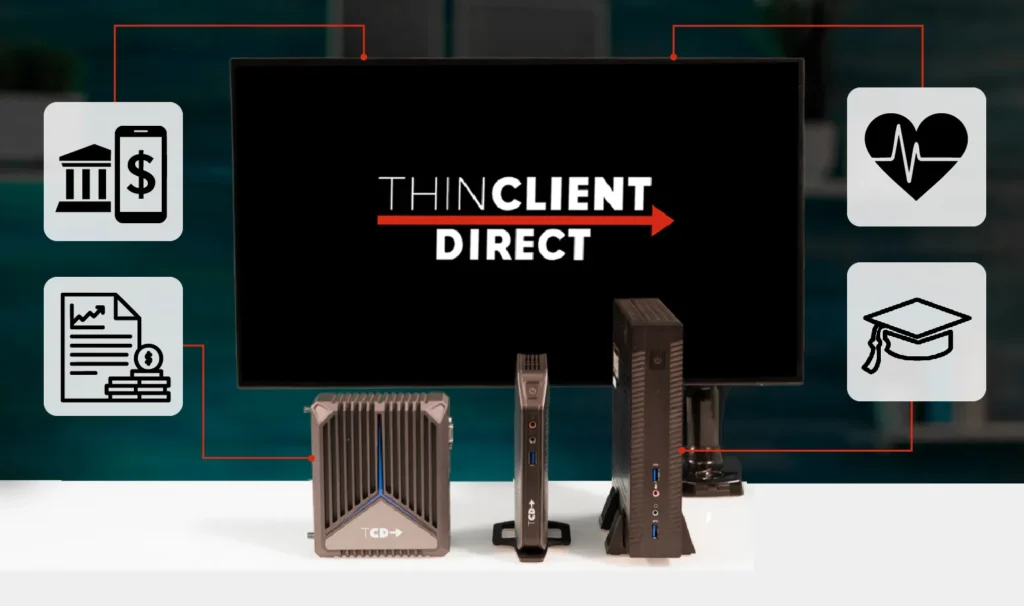Rethinking Endpoint Security: Proactive Solutions for Modern Workplaces
December 26, 2024
In today’s rapidly evolving digital landscape, businesses are under increasing pressure to secure and manage endpoint devices effectively. With the rise of SaaS, DaaS, managed enterprise browsers, and VDI, endpoint security is no longer just about fixing vulnerabilities—it’s about preventing them before they arise.
Traditional endpoint security methods, such as constant software patches and reactive updates, can be time-consuming and costly for organizations with distributed workforces and diverse devices. A more innovative approach focuses on proactive measures to strengthen endpoint resilience and simplify management. By prioritizing preventative security strategies, businesses can reduce exposure to threats like malware and ransomware while streamlining IT operations.

Why Endpoint Security Matters More Than Ever
The endpoint—whether it’s a laptop, tablet, smartphone, or thin client—serves as the gateway for employees to access critical business systems. As remote and hybrid work environments become the norm, securing these endpoints is essential for protecting sensitive data and ensuring business continuity.
Key reasons why endpoint security is critical today include:
- Growing Threat Landscape: Cyberattacks are becoming more sophisticated, with malware and ransomware targeting endpoint vulnerabilities.
- Expanding Endpoint Numbers: The modern enterprise has thousands of devices across geographies, each a potential entry point for attackers.
- Remote and Hybrid Work: Decentralized work environments mean devices are no longer protected behind traditional on-premise firewalls.
- Data Privacy Regulations: Compliance with data protection laws requires businesses to secure endpoints and protect personal information.
Limitations of Traditional Endpoint Security
Legacy approaches to endpoint security often must catch up in today’s fast-paced digital world. Businesses relying on outdated methods face the following challenges:
- Manual Patching: Constant software updates drain IT resources and increase employee downtime.
- Agent Fatigue: Installing multiple security agents on devices slows performance and frustrates users.
- Reactive Strategies: Waiting to respond to threats after they occur can result in significant financial and operational losses.
- Inconsistent Protection: Different devices and operating systems create a fragmented security environment, making centralized management difficult.
The Smarter Approach: Proactive Endpoint Security
Proactive endpoint security shifts the focus from reactive measures to prevention and resilience. Instead of scrambling to address vulnerabilities after an attack, businesses can adopt a preventative strategy that includes the following key principles:
- Centralized Management: Simplify endpoint administration with unified tools to manage devices across locations.
- Endpoint Hardening: Strengthen devices with secure, managed operating systems that minimize vulnerabilities.
- Automation and Updates: Reduce IT workloads by automating security updates and ensuring devices are always up-to-date.
- Zero Trust Architecture: Adopt a Zero Trust approach to limit access based on user identity, device health, and location.
- Resilience to Threats: Ensure endpoints are protected against malware, ransomware, and phishing attempts with built-in security features.

Benefits of Modernized Endpoint Security
By modernizing endpoint security and management, businesses can experience many benefits that impact operations and finances. These include:
Improved IT Efficiency
- Automate routine tasks like patching, software updates, and device monitoring.
- Reduce time spent on manual troubleshooting and repairs.
- Free up IT teams to focus on strategic initiatives rather than firefighting security issues.
Enhanced Security Posture
- Implement stronger controls to prevent unauthorized access.
- Protect endpoints against ransomware, malware, and phishing attacks.
- Improve compliance with industry regulations and data privacy laws.
Cost Savings
- Reduce hardware costs by extending device lifespans through lightweight, secure OS solutions.
- Minimize downtime caused by software updates and security breaches.
- Lower costs associated with ransomware recovery and data loss.
Better User Experience
- Deliver seamless access to applications and tools, even for remote workers.
- Eliminate device slowdowns caused by multiple security agents.
- Empower employees with reliable, secure devices that enhance productivity.
Scalability for Growth
- Easily manage thousands of endpoints as your business grows.
- Support hybrid work environments with consistent security across geographies.
- Integrate with SaaS, VDI, and managed enterprise solutions for a future-ready workplace.
Steps to Modernize Your Endpoint Security Strategy
To implement a more ingenious endpoint security strategy, businesses can take the following steps:
1. Assess Your Current Endpoint Environment
- Conduct an audit of existing devices, operating systems, and security measures.
- Identify gaps in protection, management inefficiencies, and compliance risks.
2. Adopt a Unified Endpoint Management Solution
- Choose tools that provide centralized visibility and control over all endpoints.
- Simplify administration by consolidating endpoint security and management functions.
3. Implement Preventative Security Measures
- Use secure, lightweight operating environments to harden endpoints.
- Automate updates and patches to reduce vulnerabilities and downtime.
4. Prioritize User Experience
- Ensure that endpoint solutions improve performance without disrupting productivity.
- Support seamless access to digital workspaces and business applications.
5. Embrace a Zero Trust Approach
- Enforce identity-based access controls to limit exposure to potential threats.
- Continuously verify device health and user activity to ensure security.
6. Plan for Scalability
- Choose endpoint solutions that grow with your organization and adapt to new challenges.
- Ensure consistent security across on-premise, remote, and hybrid work environments.

Final Thoughts: Future-Proofing Your Endpoint Strategy
As businesses navigate the complexities of modern work environments, endpoint security must evolve to meet new challenges. By adopting a proactive approach, organizations can:
- Strengthen security posture against advanced threats.
- Streamline IT operations and reduce management overhead.
- Deliver better experiences for employees, no matter where they work.
- Achieve cost savings and scalability for long-term success.
Endpoint security isn’t just a technology decision—it’s a business strategy. Investing in a modernized, preventative approach ensures that your organization is well-equipped to handle the demands of today’s digital workplace and prepares you for the challenges of tomorrow.



